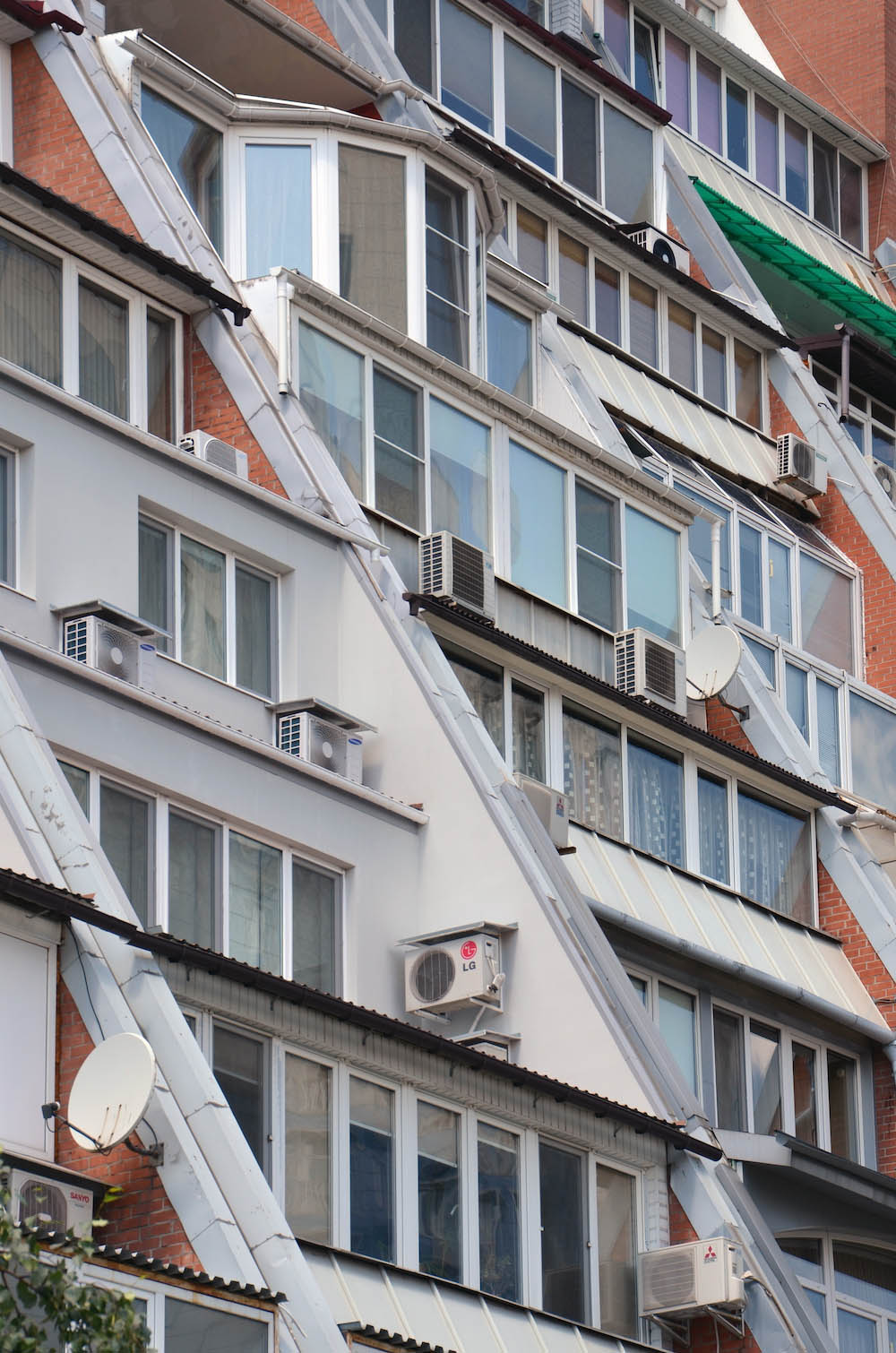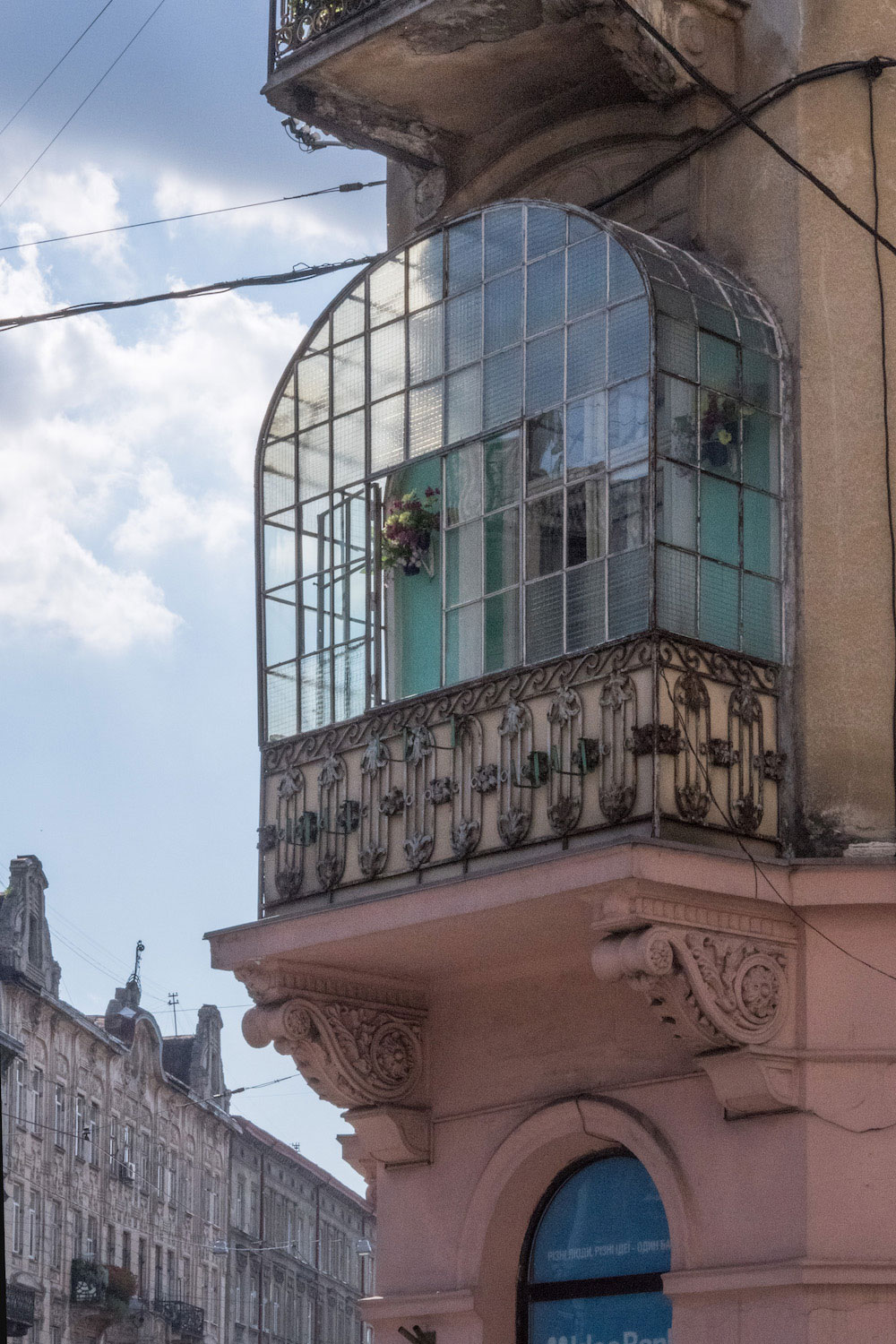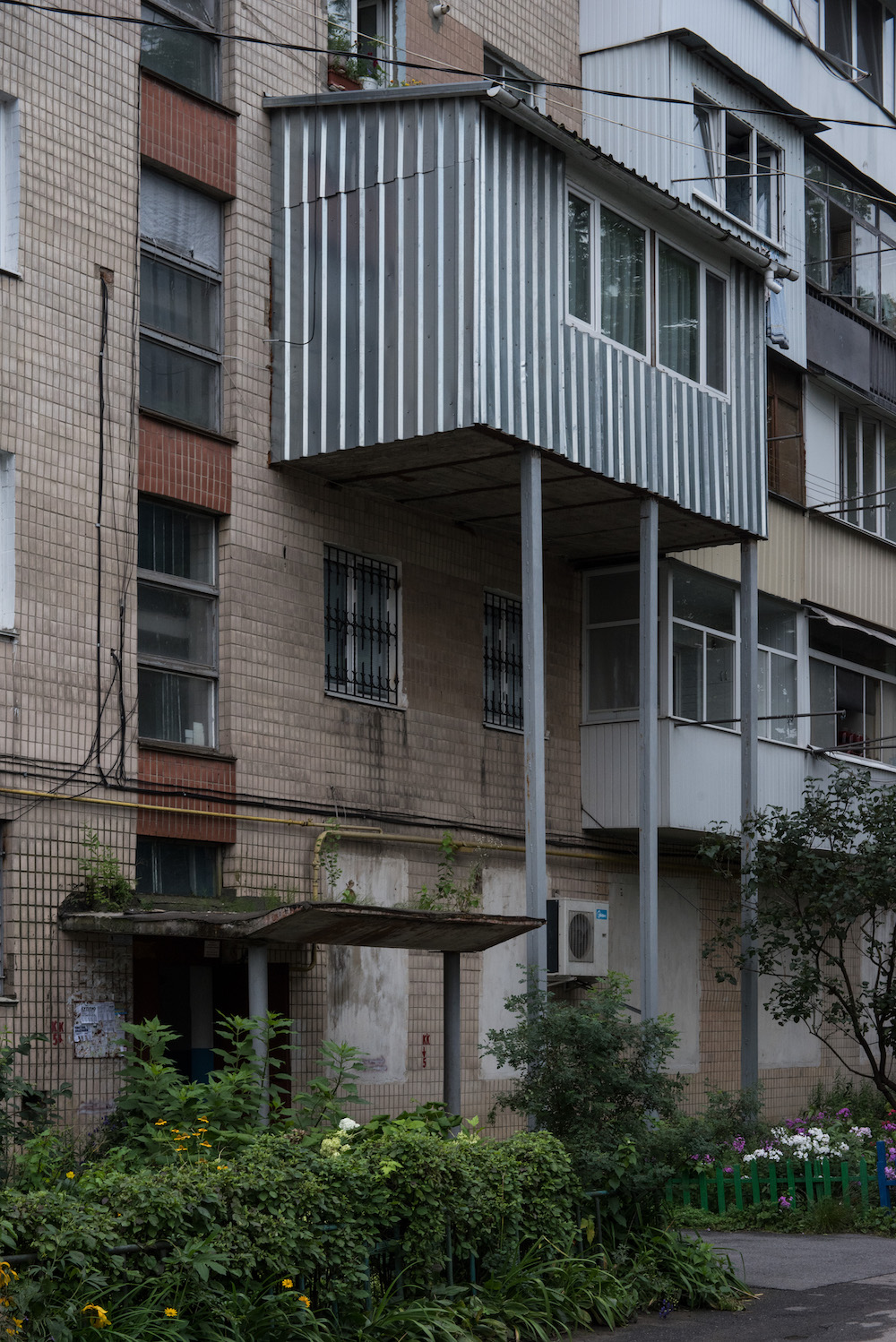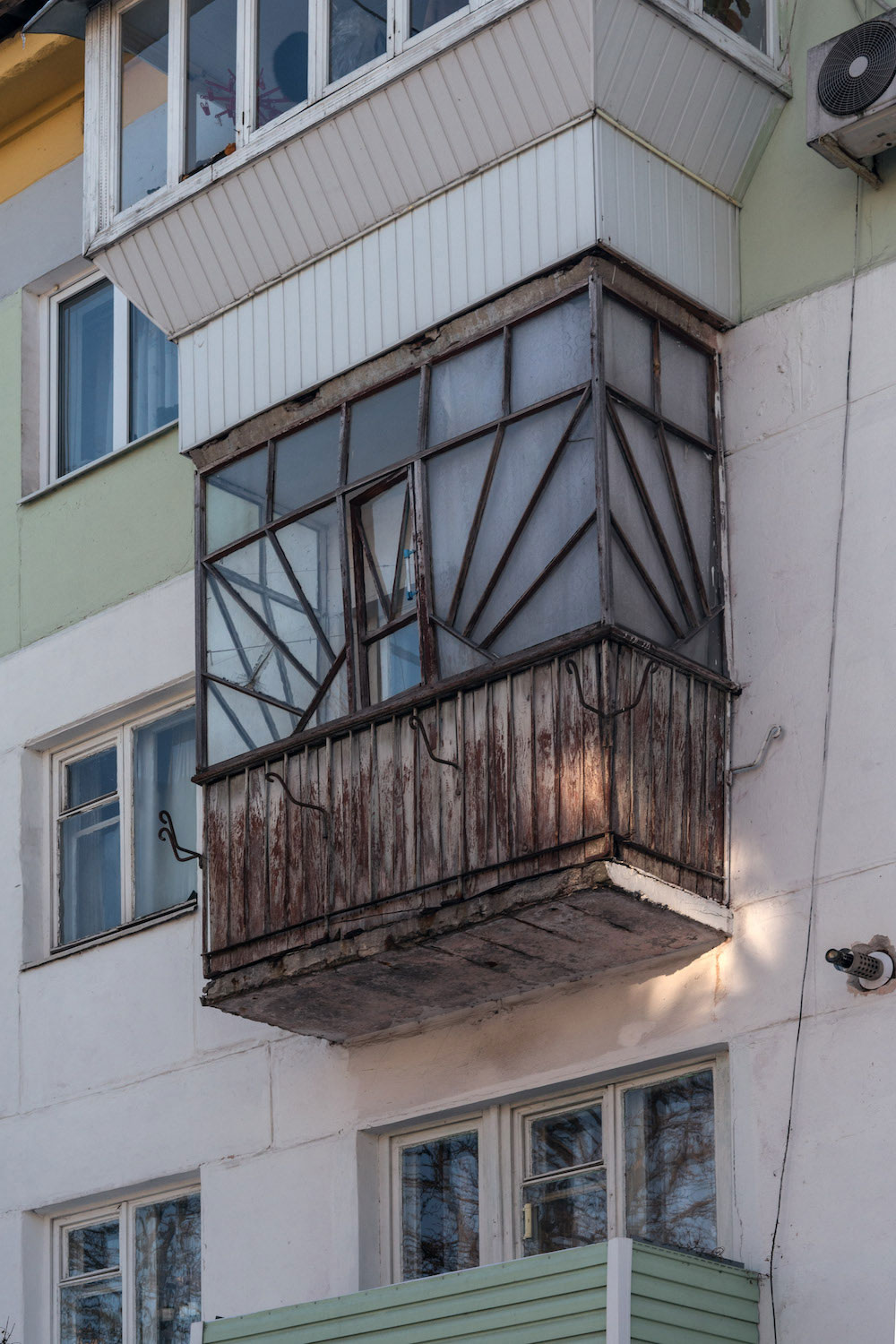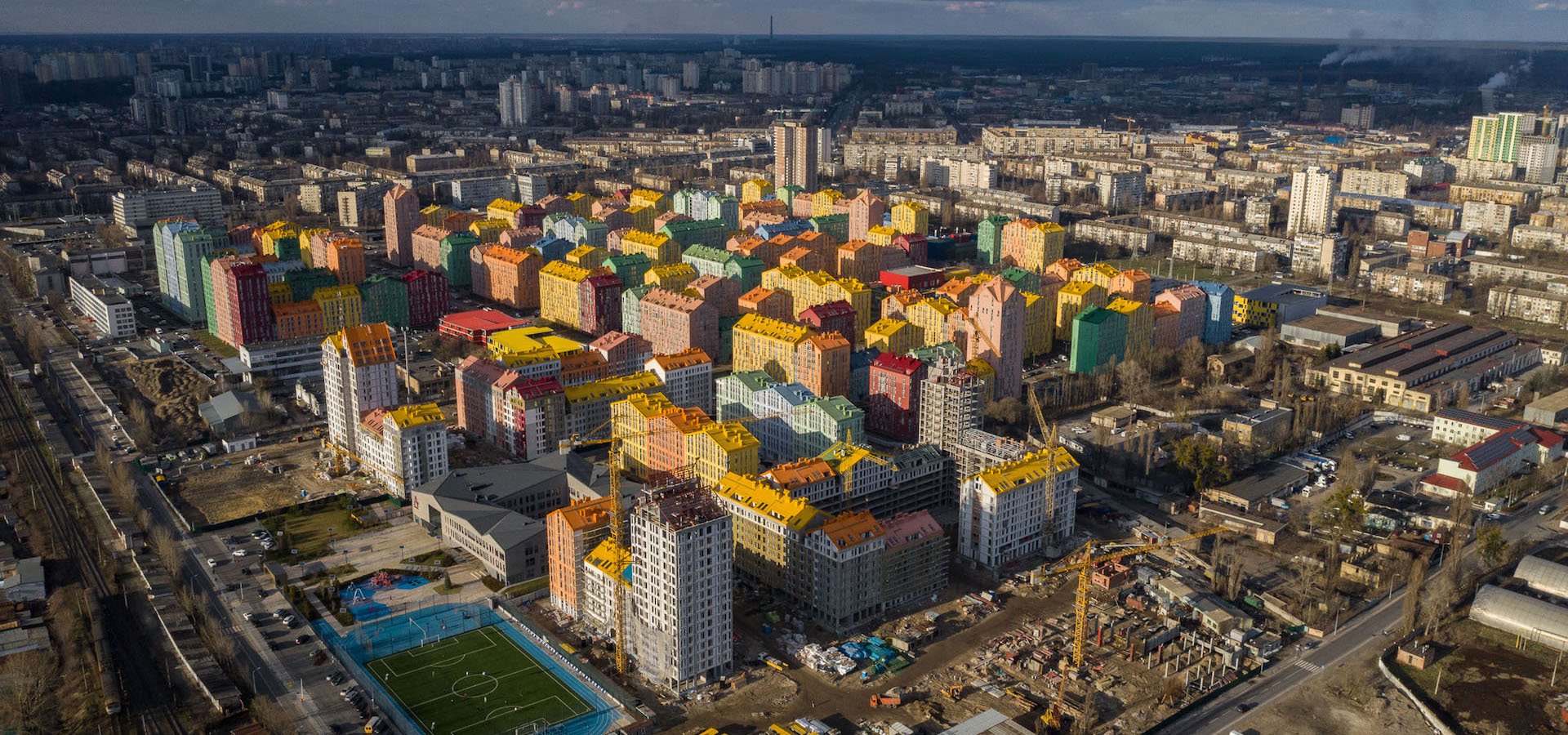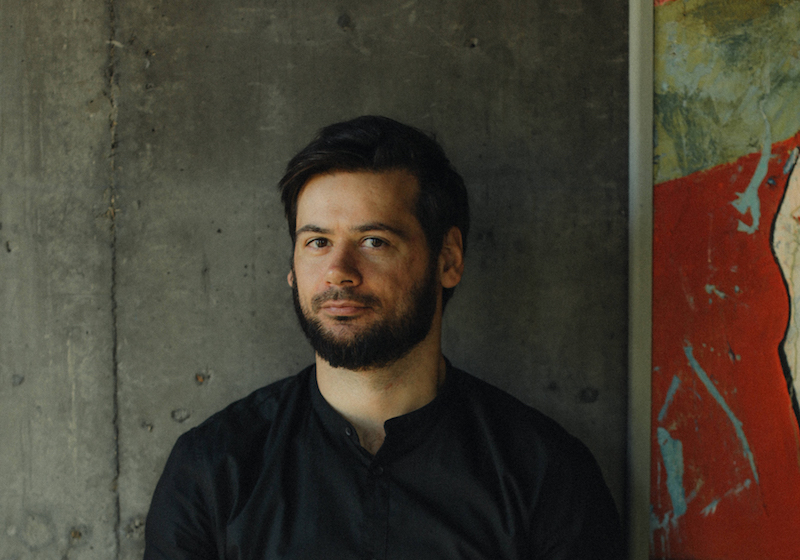Castle in the clouds: celebrating the eclectic, DIY designs of Ukraine’s status symbol balconies
As socialism collapsed, Ukrainians in the 1990s got their first real taste of home renovation — with a bespoke balcony becoming a local status symbol. Now, these high-rise extensions are getting the attention they deserve from artists, academics and architects.
No one lavishes enthusiasm on designing balconies quite like those in Ukraine.
There are balconies with curtains and balconies crafted in the shape of a ship’s hull. Some have been transformed into second entrances. Others serve as bedrooms or sound studios. Sometimes, even a small swimming pool can fit.
The jumble of glass, iron bars, concrete balustrades, and wood that shapes the image of cities like Kyiv can all be found on the façade of a single building, each balcony proclaiming their owners’ own unique identity.
“In most countries, you look at a person’s apartment to see whether they have money. In Ukraine, you look at the balcony.”
But while Ukrainian balconies may say a lot about those who built them, they also mirror the socio-political changes and the living conditions in the country itself. While more and more skyscrapers are being built in the Ukrainian capital, Kyiv, most Ukrainians still live in apartments built in the 1960s. The infrastructure was planned for “Soviet citizens”, who worked and ate in their factories. Houses focused on practical living, rather than private comfort. Some lacked a kitchen.
When the Soviet Union collapsed, many Ukrainians became the owners of their apartments for the first time. Throughout the 1990s, they began to truly experiment with renovation for the first time – with balconies getting special attention. By deciding what to do with their private property, Ukrainians started to shape the way their cities look.
Lately, these balconies have become a new focus for urbanists, architects, and artists — including 37-year-old architect and artist, Oleksandr Burlaka. In his latest photo book, Balcony Chic, he documents the most beautiful, strange and innovative balconies in Ukraine: flawlessly combining function and self-expression.
He talked to The Calvert Journal about shaky structures, terraces that double up as pigsties, and why Ukraine may remain the Wild West of balcony building for some time to come.
What makes balconies in Ukraine so special?
Architecture in Ukraine is more or less the same as in other European countries: there are neo-baroque and modern buildings and those in Art Nouveau style. But the balconies in Ukraine are unique. Even balconies on the facade of the same building can look absolutely different. The shapes and colours not only tell the history of the house itself, they also say a lot about the social status of the apartment-owners. In most countries you look at people’s apartments [to see if they have money]. In Ukraine, you look at their balcony. They are a status symbol. People here think that they have to have a balcony.
Why do you think balconies in Ukraine have become such a status symbol?
Over the past 100 years, the political situation in Ukraine has been in constant flux. At the beginning of the 20th century, several families shared one flat, with people even living together in single rooms. The staircase, the corridor, the kitchen: everything was shared. Those who had access to a balcony had more space, as well as an additional private area. From the very start, that has been a privilege.
So, what are Ukrainians doing with their balconies today?
During my research, I came across balconies where mushrooms were being cultivated. In Poltava, someone kept a pig on the balcony. Some years ago, in Dnipro, someone built a small swimming pool up there. I saw balconies that were bedrooms, and one where some sound engineers had set up the balcony as a sound studio. Perhaps most interesting of all were the balconies — or terraces — at ground floor level. Many had been turned into small grocery kiosks, or barbershops. Others were opened out to become entrances for wheelchairs, as most buildings in Ukraine still aren’t barrier-free.
In your book, you also write that it isn’t always clear if these balconies were built legally or not…
Actually, many of the balcony owners with whom I spoke want things to be more settled [in terms of building regulations] in our country. They like the fact that there are laws in the European Union that govern public space. They like that you can’t just park wherever you want, for example. At the same time, they continue to do everything in Ukraine as it was ten years ago [when things were much more relaxed]: when it comes to balconies, this is the Wild West. Most of the balconies were not legally built, but penalties for breaking those laws are not particularly severe either. The balconies are part of a freedom that people are no longer willing to give up after all the decades of oppression.
How do you interpret this do it yourself-philosophy?
I believe that it shows the anarchistic character of our society. People here do not believe in government. But they also do not believe in the idea of a state — and certainly not a welfare state — that takes care of their needs. That’s why Ukrainians try to improve their lives on their own, and that starts with their homes.
All the same, if you look at some these balconies from the street, you do sometimes doubt their safety…
I am afraid that most of balconies are more stable than the buildings to which they were attached.
Do you think this trend for grand or eccentric balconies is a generational phenomenon?
I believe that it is an economic phenomenon. Depending on how Ukraine develops, I think there are two options. Either there will be more regulation and many balconies will be removed so that the houses can be properly renovated, or we will continue to build on top of the housing structures that are already there, and the cities will become even more chaotic.
Do you think these balconies could ever become a tourist attraction? There have been plenty of social media pages posting the best and worst of wacky balconies for a while now.
I could imagine city tours walking through the courtyards of this country, looking at the balconies and seeing how Ukrainians live.
But honestly, I think that a lot of what we see [about these balconies] on social networks is a form of ruin porn. I don’t think it’s right to make fun of these balconies, because most Ukrainians are very proud of them. Behind every so-called crazy facade is a story all of its own.
